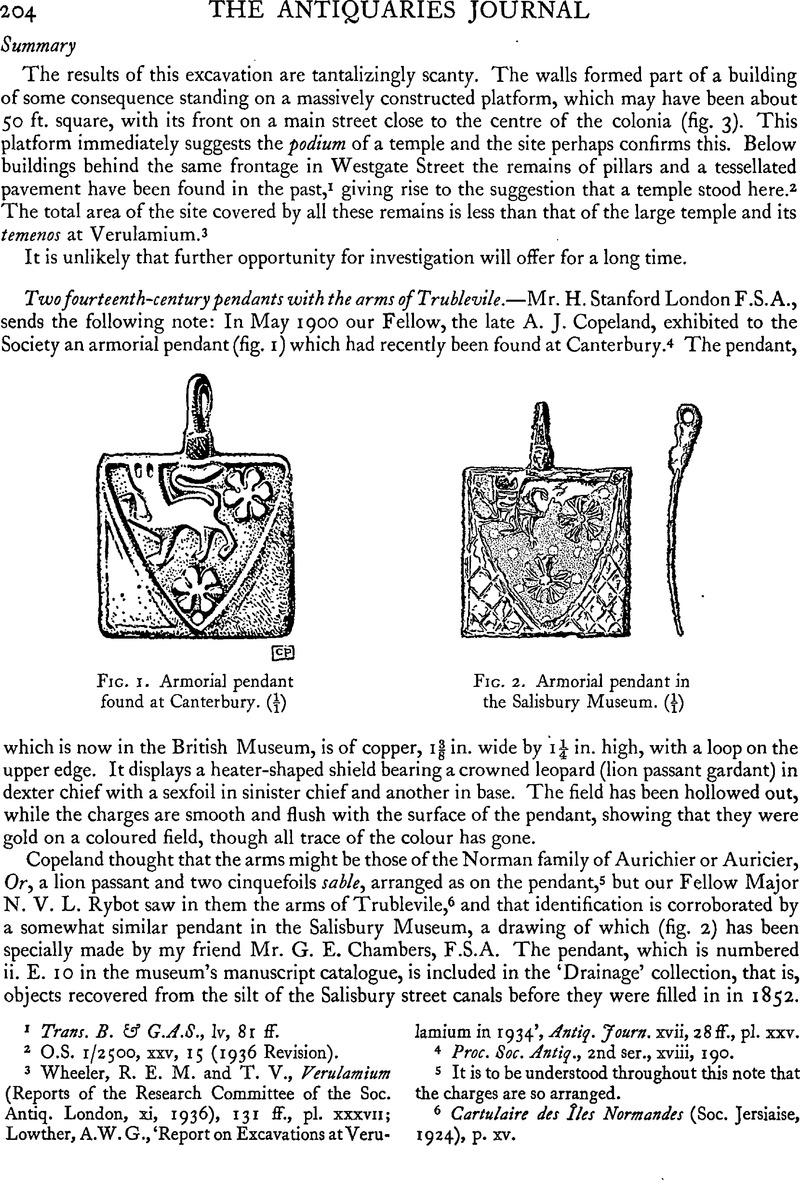No CrossRef data available.
Article contents
Two fourteenth-century pendants with the arms of Trublevile
Published online by Cambridge University Press: 08 January 2012
Abstract

- Type
- Notes
- Information
- Copyright
- Copyright © The Society of Antiquaries of London 1949
References
page 204 note 4 Proc. Soc. Antiq., 2nd ser., xviii, 190.
page 204 note 5 It is to be understood throughout this note that the charges are so arranged.
page 204 note 6 Cartulaire des Iles Normandes (Soc. Jersiaise, 1924), p. xv.Google Scholar
page 205 note 1 Vol. xxxii, opp. p. 234.
page 205 note 2 Demay, Sceaux de la Normandie, no. 568.
page 205 note 3 Edited by C. S. Perceval, F.S.A., in Archaeologia, xxxix, and reprinted in Three Rolls of Arms of the Latter Part of the Thirteenth Century, 1864; see pp. 40, 57.Google Scholar
page 205 note 4 This is a 15th-century copy; the painting imitates its older original, but the copyist had difficulty with the legends and many of the names are sadly garbled. See reproduction in Encyclopaedia Britannica, 11th edit., art. ‘Heraldry’, opp. p. 312. Starkey's copy of the roll, made in 1586 (B. M. MS. Add. 4965, f. 20 v) spells the name Habervile.
page 205 note 5 B.M. MS. Harl. 6137, f. 53 v.
page 205 note 6 Ibid. 6589, f. 17 v.
page 205 note 7 B.M. MSS. Harl. 6137, f. 80 v, and 246, f. 3 2 v
page 205 note 8 MS. M 14, f. xlvij/183, no. 321. This is one of Sir Thomas Wriothesley's manuscripts, the section in question being a 16th-century copy of an earlier document. The similarity of the names has led to some confusion between the families of Trublevile and Turbervile. The latter bore quite different arms; the Dorset family wore a red lion in a silver or ermine field, and there are several other coats attributed to the name.
page 206 note 1 Douët-d'Arcq, Armorial de France de la fin du 14ème siècle, 1859.
page 206 note 2 Demay, Sceaux de la Collection Clairambault, no. 445.
page 206 note 3 Ibid., no. 167.
page 206 note 4 Armorial de France … par Gilles le Bouvier dit Berry, ed. Vallet de Viriville, 1866, no. 609.
page 206 note 5 Douët-d'Arcq, Sceaux de I'Empire, no. 2542.
page 206 note 6 Demay, Sceaux de la Collection Clairambault, no. 2107.




